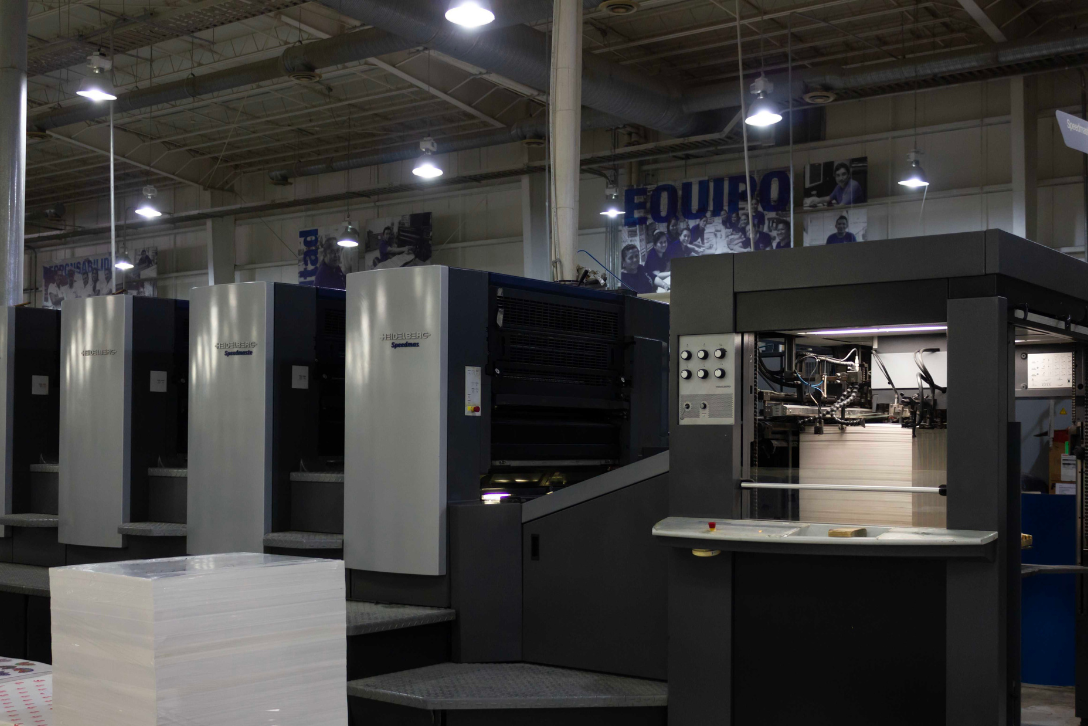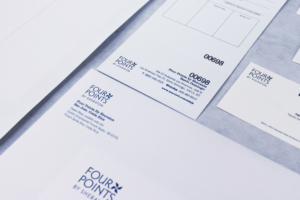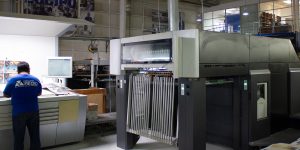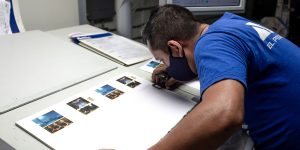In the dynamic world of commercial printing, offset lithography stands as a cornerstone, celebrated for its ability to deliver high-quality, cost-effective print runs at scale. However, the magic behind this process isn’t solely the technique itself; it’s the sophisticated machinery that brings ink to life on paper. Let’s explore the best offset printing technology available, and how industry leaders like Grupo Regio harness these advancements to deliver exceptional results.
Understanding Offset Printing: A Refresher
Before diving into the hardware, it’s crucial to understand the offset printing process. It involves a series of meticulously orchestrated steps:
- Pre-press: This stage involves preparing the printing plates, which act as the “masters” for the image. Traditionally, film was used, but modern workflows often utilize computer-to-plate (CTP) technology for faster turnaround and greater precision. Grupo Regio leverages state-of-the-art CTP systems to ensure accuracy and efficiency in plate production.
- Inking: The printing plates are mounted on a cylinder, and ink is applied. Crucially, the ink doesn’t transfer directly to the paper.
- Offsetting: The inked image is transferred to a “blanket” cylinder, made of a rubber material. This is the “offset” part of the process, hence the name. This step ensures a smooth and even ink distribution.
- Printing: The blanket then transfers the image to the paper, creating a crisp, consistent impression. The precision of this transfer is paramount to the final print quality.
This indirect method, combined with the precise engineering of the printing presses themselves, is what gives offset its unique advantages, particularly for large print runs.
Heidelberg: The Heart of Offset Excellence
When discussing best-in-class offset printing technology, one name inevitably rises to the top: Heidelberg. For decades, Heidelberg has been a dominant force in the industry, producing presses known for their reliability, speed, and exceptional print quality. Their machines are often the workhorses of large commercial print shops, handling everything from brochures and catalogs to packaging and high-end marketing materials.
Grupo Regio’s commitment to quality is reflected in their investment in Heidelberg printing technology. Their pressroom boasts an impressive lineup of Heidelberg Speedmaster XL presses, renowned for their advanced automation, precise ink control, and robust engineering. These presses enable Grupo Regio to handle high-volume print runs with exceptional efficiency and maintain the highest standards of print quality.
Heidelberg presses are celebrated for several key features:
- Advanced Automation: Modern Heidelberg machines are highly automated, reducing makeready times and minimizing the potential for human error. This translates to faster turnaround times and greater efficiency for print jobs, allowing Grupo Regio to meet tight deadlines and deliver projects promptly.
- Precise Ink Control: Heidelberg’s inking systems are engineered for precise ink metering and distribution, resulting in consistent color reproduction and sharp details. This ensures that every print job meets Grupo Regio’s exacting standards for color accuracy and vibrancy.
- Robust Engineering: These presses are built to last, capable of handling high-volume print runs with minimal downtime. This reliability is essential for Grupo Regio to maintain consistent production and meet the demands of their clients.
- Integration: Heidelberg offers a range of integrated solutions, from pre-press software to finishing equipment, allowing print shops to create seamless workflows. Grupo Regio leverages these integrated systems to optimize their production processes and ensure a smooth and efficient workflow from start to finish.
Müller Martini: Finishing Touches for Perfection
Beyond the printing process itself, the finishing and bindery stages are crucial for producing high-quality printed materials. This is where Müller Martini comes in. As a global leader in finishing systems, Müller Martini provides innovative solutions for cutting, folding, stitching, and binding printed products.
Grupo Regio’s investment in Müller Martini equipment further demonstrates their commitment to delivering exceptional quality and efficiency. Their finishing department utilizes a range of Müller Martini systems, including high-speed cutters, precision folders, and automated binders, to ensure that every printed piece is finished to perfection.
Müller Martini’s finishing systems are known for:
- Precision and Accuracy: Müller Martini equipment is renowned for its precision and accuracy, ensuring that every cut, fold, and stitch is executed flawlessly. This attention to detail is critical for producing high-quality finished products.
- Automation and Efficiency: Müller Martini’s automated systems streamline the finishing process, reducing manual labor and increasing production speed. This allows Grupo Regio to handle large print runs efficiently and meet tight deadlines.
- Versatility: Müller Martini offers a wide range of finishing solutions to accommodate various print products and formats. This versatility allows Grupo Regio to cater to diverse client needs and produce a variety of finished products, from brochures and magazines to books and catalogs.
- Durability and Reliability: Müller Martini equipment is built to last, ensuring consistent performance and minimal downtime. This reliability is crucial for Grupo Regio to maintain a smooth and efficient workflow.
Offset vs. Digital: Choosing the Right Technology
The question often arises: “Offset or digital?” While digital printing has made significant strides, offset still holds advantages for certain types of projects.
- Print Volume: Offset is generally more cost-effective for large print runs. The initial setup costs are higher, but the per-unit cost decreases as the print volume increases. This makes offset an ideal choice for high-volume projects where cost efficiency is a key consideration.
- Print Quality: While digital printing quality has improved dramatically, many still consider offset to be superior, particularly for projects that demand the highest level of color accuracy and detail. The precise ink control and smooth ink distribution of offset printing contribute to its exceptional print quality.
- Substrate Versatility: Offset can handle a wider range of substrates (paper types and thicknesses) than some digital printing methods. This versatility allows Grupo Regio to cater to a variety of client needs and produce print projects on a wide range of materials.
Digital printing, on the other hand, excels in:
- Short Runs: Digital is ideal for small print runs, where the setup costs of offset would be prohibitive. Its quick setup and minimal waste make it a cost-effective solution for small-scale projects.
- Variable Data Printing: Digital enables the printing of personalized content, such as variable text and images, which is not possible with traditional offset. This capability opens up opportunities for targeted marketing and personalized print materials.
- Faster Turnaround: Digital jobs can often be turned around more quickly than offset, as there is less setup involved. This makes digital a suitable option for projects with tight deadlines.
Grupo Regio: A Legacy of Print Excellence
Grupo Regio’s commitment to excellence is evident in their investment in top-tier printing and finishing technology. By combining Heidelberg’s renowned printing presses with Müller Martini’s state-of-the-art finishing systems, Grupo Regio creates a powerful synergy that elevates their print production capabilities.
This strategic investment in technology, coupled with their team of skilled professionals and dedication to customer satisfaction, makes Grupo Regio a trusted partner for businesses seeking unparalleled print quality and efficiency.
Conclusion
The world of offset printing is constantly evolving, with manufacturers pushing the boundaries of what’s possible. By partnering with a print provider that invests in best-in-class technology, businesses can ensure that their print projects are executed with precision, quality, and efficiency. Grupo Regio’s commitment to utilizing the best offset printing and finishing technology, combined with their expertise and dedication to customer satisfaction, makes them an ideal partner for businesses seeking high-quality print solutions.
Frequently Asked Questions (FAQs)
- What is offset printing? Offset lithography is a printing process where the inked image is transferred from a printing plate to a rubber blanket, and then to the printing surface.
- What are the advantages of offset printing? Offset is known for its high quality, cost-effectiveness at scale, and ability to handle a wide range of substrates.
- What is the difference between offset and digital printing? Offset is generally better for large print runs and high-quality demands, while digital is more suitable for short runs and personalized printing.
- Why is Heidelberg considered a leading manufacturer of offset presses? Heidelberg presses are known for their reliability, speed, advanced automation, and exceptional print quality.
- What are the benefits of Müller Martini finishing systems? Müller Martini finishing systems are known for their precision, automation, versatility, and reliability, ensuring high-quality finishing and efficient production.
- How can I choose the best printing method for my project? Consider factors such as print volume, quality requirements, turnaround time, and budget when making your decision. Consulting with a print professional is also highly recommended.





